Everyone investigate the meaning, customs, and festivities of the main Global December Holidays—Christmas, Hanukkah, and Yule—in this extensive reference. Our goal is to demonstrate to you an in-depth knowledge of these holidays so you are able to recognize the richness and variety of cultures that surround this joyous time of year.
St. Nicholas Day (Dec. 5 or 6)
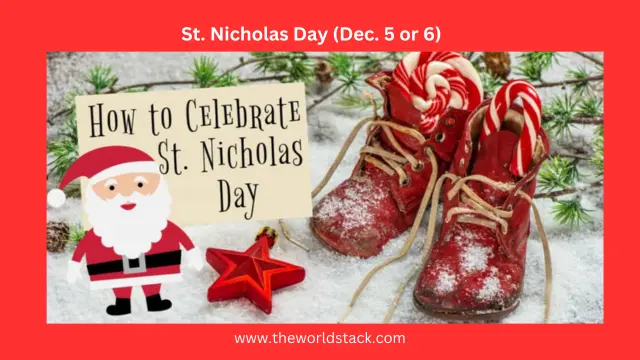
Depending on the custom and nation, December 5th or 6th is when St. Nicholas Day is celebrated. This festival honors the life and activities of Saint Nicholas, the fourth-century Christian bishop who became the model for the historical Santa Claus.
While local celebration dates can change, the spirit of the occasion always remains the same. Saint. Nicholas is honored for his kindness and generosity, especially with regard to young people. Different customs and ceremonies are practiced by many cultures on this day:
Gift-giving: St. Nicholas is related to gift-giving. In certain regions, kids find little gifts, candy, or cash in their hosiery or shoes that were left outdoors the previous evening.
St. Nicholas Parades: St. Nicholas is often accompanied by angels or helpers in bishop’s clothing during St. Nicholas parades or parades, which are held in several nations. These marches are often extremely elaborate and joyous.
Feasting: On St. Nicholas Day, people frequently engage in traditional dishes and sweets. It’s customary to make cookies or pastries specifically for the occasion in some areas.
Acts of Kindness: Saint. Nicholas was well-known for his acts of kindness. This day is welcomed by many as an opportunity to show generosity and compassion to others.
Immaculate Conception Day (Dec. 8)
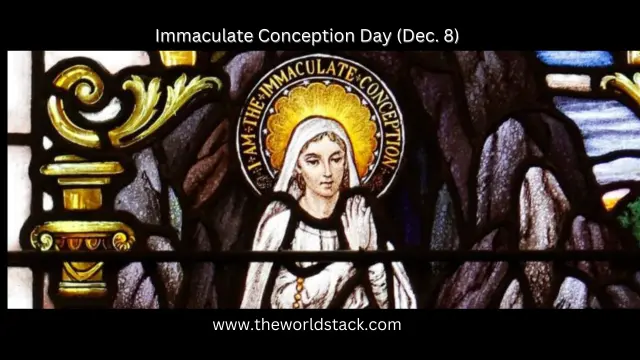
The Catholic faith holds great importance and delight on December 12th, the Feast Day of Our Lady of Guadalupe, especially in Mexico and among the Hispanic community. This day celebrates the arrival of the Virgin Mary to the native Mexican Juan Diego in 1531. In celebration of this event, believers use a rich weaving of religious rites, processions, and true devotion. This signifies an appropriate combination of Native American and Catholic customs, highlighting Mary’s significance as an icon of compassion, hope, and solidarity.
Bodhi Day (Dec 8)
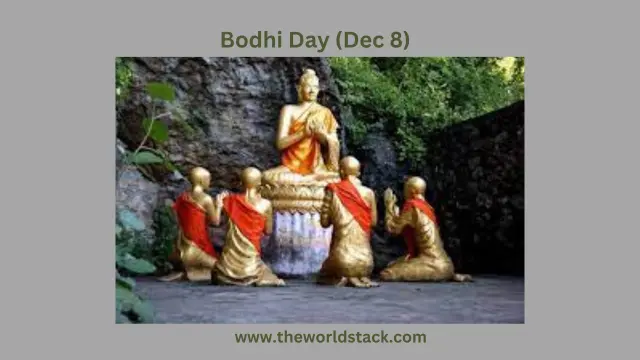
Bodhi Day holds great importance in the Buddhist tradition. Observed annually on December 8th, Bodhi Day commemorates the pivotal moment when Siddhartha Gautama, widely known as the historical Buddha, achieved enlightenment beneath a Bodhi tree. Siddhartha, according to Buddhist teachings, dedicated years to fervently seeking liberation from suffering and continuously meditating until he achieved a profound state of awareness.
Feast Of Our Lady Guadalupe (Dec 12)
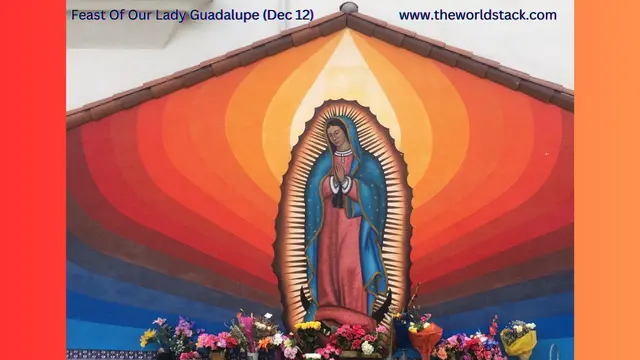
The Feast Day of Our Lady of Guadalupe holds great religious importance in Mexico and among Mexican communities worldwide. The 12th of December is the annual celebration of it. It recalls the appearance of Our Lady of Guadalupe, the Virgin Mary, to Juan Diego, a native Mexican peasant, in 1531. Her image inexplicably left a trace on his cloak, or “tilma,” and that she conveyed a message of unity, love, and compassion. As Mexico’s patroness, Our Lady of Guadalupe is a symbol of faith and national identity.
Hanukkah: The Festival of Lights (Dec 18-26)
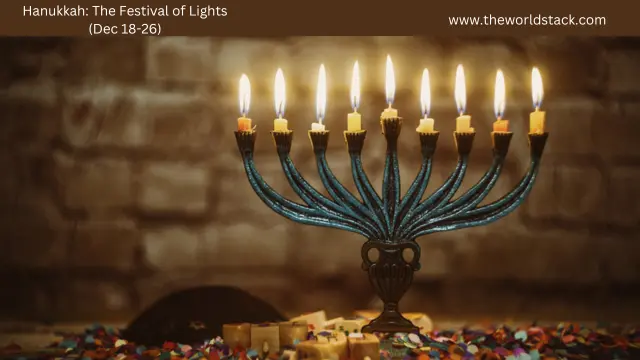
Historical Significance
Chanukah, or Hanukkah, is a prominent Jewish celebration that falls in December each year. It symbolizes the oil miracle as well as the renewed commitment of the Second Temple in Jerusalem.
Customs and Practices
- Menorah Lighting: A vital part of Hanukkah festivities is the illumination of the menorah, a nine-branched candelabrum. For eight nights, a candle is lit every night.
- Dreidel Game: The dreidel is a well-known Hanukkah game in which players manage a spinning top.
- Traditional Foods: As part of the festival celebrations, people indulge in delicious dishes that are typically cooked using oil. Some popular examples include latkes (potato pancakes) and sufganiyot (jelly-filled doughnuts).
Worldwide Observance
Hanukkah is recognized throughout Jewish communities all around the world, with varying customs and traditions.
Yule: A Pagan Winter Solstice Celebration
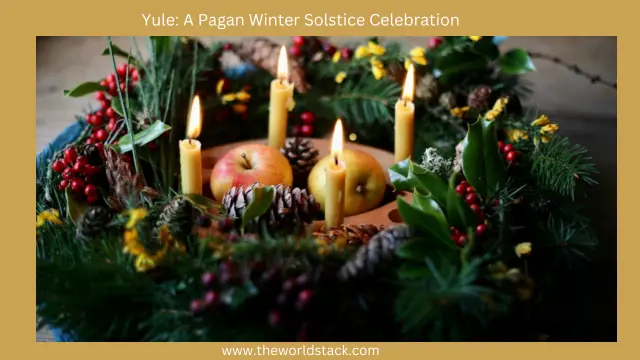
Ancient Origins
The pagan holiday of Yule honors the appearance of the sun and the winter solstice. It has a strong connection with myths and history.
Rituals and Symbols
- Yule Log: One important custom that represents the sun’s reappearance is burning a Yule log.
- Yule Meal: Often involves an enormous meal with a focus on the consumption of evergreen decorations.
- Present-Exchanging: Swapping gifts is another part of the Yuletide festivities that accentuates the giving attitude.
Modern Interpretations
There has been a rebirth of interest in Yule among mainstream pagans and nature-based spiritual seekers. It has been regarded as a time to connect with the natural cycles.
Christmas: A Worldwide Celebration (Dec 25)
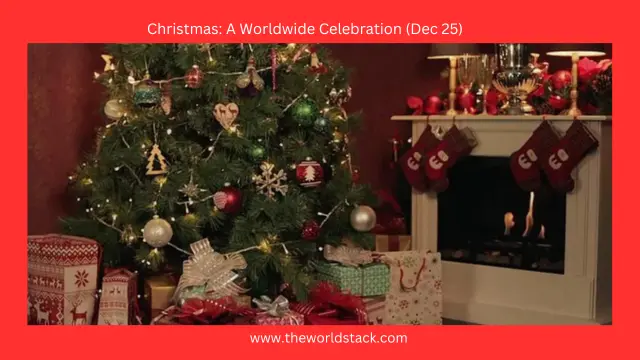
History and Origins
Christmas is one of the most well-known international festivals, honored on December 25. Their roots are found in the Bethlehem birth of Jesus Christ. Over the ages, the act of celebration has evolved, incorporating a variety of cultural practices and traditions.
Traditions and Symbols
- Christmas trees: Decked out in lights and ornaments are an essential aspect of this occasion. Another well-liked custom is hanging stockings beside the fireplace.
- Santa Claus: Santa Claus is a cheerful figure associated with Christmas and it is recognized for his red coat and white beard.
- Present-Giving: Giving and receiving gifts is a cherished tradition that reflects giving and receiving.
Celebrations Around the World
- United States: Christmas is a major holiday in the United States, with parades, carol singing, and spectacular light displays among all of the festivities.
- Europe: Every country in Europe has its own unique traditions. In Spain, the holiday season spans until Three Kings’ Day on January 6th. On the other hand, Germany has a well-established tradition of using Advent calendars.
- Asia: In China, Christmas is increasingly seen as a commercial holiday. However, in Japan, it remains a sentimental occasion for couples to exchange gifts.
Conclusion
In summary, December is a month full with holiday celebrations and multiculturalism. The Global December Holidays comprehending the significance of Yule, Hanukkah, and Christmas encourages us to appreciate the diverse rituals and customs that inject joy and significance into this joyous season. May you have a warm, loving, and pleasant December as you completely immerse yourself in the spirit of these holidays.
Read More: ” Explore the joy of global December holidays, you’ll undoubtedly come across various festive words and phrases. If you’re curious about unique Christmas words, don’t miss our article on ‘Christmas Words That Start with Q,’ where you can discover intriguing vocabulary related to this beloved holiday season.”

